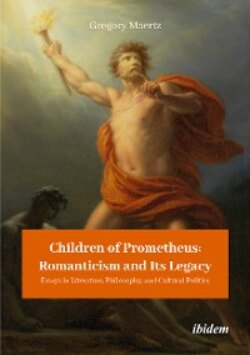Читать книгу Children of Prometheus: Romanticism and Its Legacy - Gregory Maertz - Страница 9
2 Intertextual Dialogue: Father and Daughter Novelists
Оглавление“A new species would bless me as its creator and source; many happy and excellent natures would owe their being to me. No father could claim the gratitude of his child so completely as I should deserve theirs.”
Mary Shelley, Frankenstein, or the Modern Prometheus
“The importance of struggling with another’s discourse, its influence in the history of an individual’s coming to ideological consciousness, is enormous. One’s own discourse and one’s own voice, although born of another or dynamically stimulated by another, will sooner or later begin to liberate themselves from the authority of the other’s discourse.”
Mikhail Bakhtin, “Discourse in the Novel”
A brief survey of literary history in the late eighteenth and early nineteenth centuries yields several prominent examples of intertextual dialogue: James Boswell’s Life of Samuel Johnson (1791), the collaboration of Johann Wolfgang von Goethe (1749–1832) with Friedrich Schiller (1759–1805) in the journals Die Horen (1795–1797) and Musenalmanach (1796–1800) and then again with C.M. Wieland (1733–1813) in Taschenbuch auf das Jahr 1804, and Samuel Taylor Coleridge’s controversial appropriations of German sources in Biographia Literaria (1817). Dialogue in these works reflects a process fraught with more complexity than the term usually implies, since the emergence of each new text presupposes a struggle with more authoritative discourse. There are enough additional examples, such as the Schlegel-Tieck translation of Shakespeare (1797–1801, 1810), William Wordsworth and Coleridge’s Lyrical Ballads (1798), and J.P. Eckermann’s Gespräche mit Goethe (1836–48), to suggest that intertextual dialogue is one of the paradigmatic modes of Romanticism. These examples also illustrate Mikhail Bakhtin’s characterization of literary history as “an arena of struggle constantly being waged . . . against various kinds and degrees of authority”: the young Schiller and the amanuensis Johann Peter Eckermann (1792–1854) with Goethe, Boswell with Johnson, the “Great Cham,” Coleridge (1772–1834) with Immanuel Kant (1724–1804) and F.W.J. Schelling (1775–1854), and the translators Friedrich Schlegel (1772–1829) and Ludwig Tieck (1773–1853) with the works of William Shakespeare.1
For Bakhtin the generic locus of this struggle is the novel and an intertextual dialogue that exemplifies the effort to achieve individuated discourse during the Romantic Period is exemplified by Mary Shelley’s Frankenstein, or the Modern Prometheus (1818) and William Godwin’s St. Leon: A Tale of the Sixteenth Century (1799). The intertextual ligatures connecting these texts have previously been acknowledged, but never fully revealed.2 The present discussion is built on this previously unvisited site and is intended to satisfy two objectives: first, to suggest that St. Leon is the primary precursor text with which Shelley engaged in intertextual dialogue during the composition of Frankenstein; and secondly, as a re-writing of Godwin’s novel, Frankenstein illustrates the dialogic progression from Shelley’s appropriation of her father’s discourse to the emergence of her own authorial originality. Seen from this perspective, the novel functions as an allegory of its author’s education and literary apprenticeship. Moreover, intertextual dialogue between Frankenstein and St. Leon imposes a slight modification on Harold Bloom’s paradigm of influence. Here, and in some of the examples named above, the “strong precursor” with whom the “ephebe” grapples is not a poet of the past but a near contemporary. As the product of intertextual dialogue, Shelley’s novel embodies the female child’s quest for independence from patriarchal authority, but the act of asserting her independence is made problematic in this case by the fact that her “strong precursor” is not merely a near contemporary but her own father. Partially orphaned and then alienated by a stepmother whom she saw as a rival for her father’s attention, Shelley’s attachment to her father was perhaps also afflicted by a trace of culpability for her mother’s death in childbirth.3
